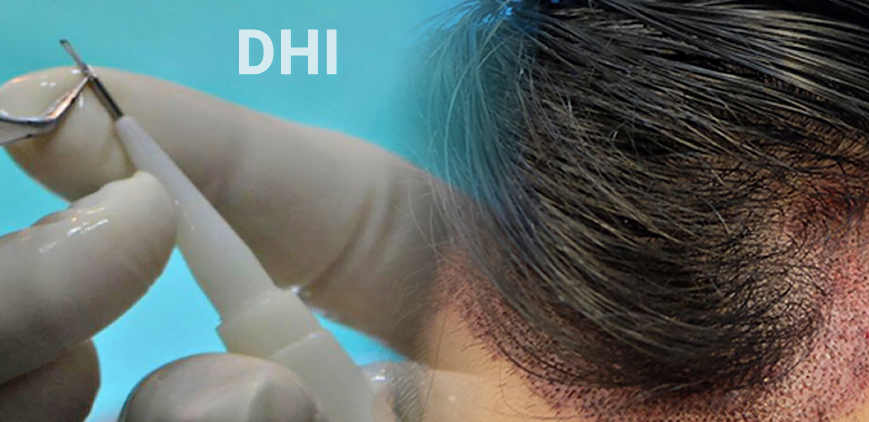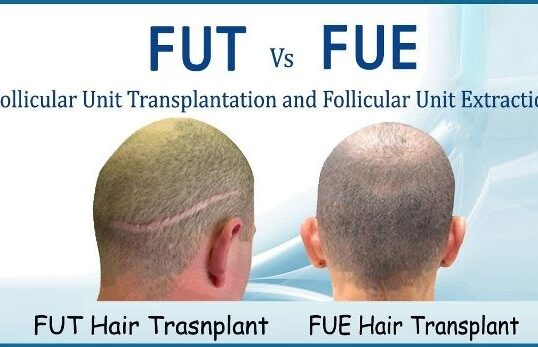DHI Hair Transplants is a hair restoration process that yields natural-looking hairlines and long-term results. DHI offers a painless technique with faster recuperation times.
Have you had enough of wishing you had more hair when gazing at your reflection? You are not alone. Thinning hair might feel like a heavyweight in a world where appearances mean a lot. However, there is cause for optimism in the field of hair restoration, thanks to DHI (Direct Hair Implantation) Hair Transplant.
Imagine a smooth, organic technique that grows back your hair and your confidence. That’s a cutting-edge DHI Hair Transplant treatment that offers this option in the fight against hair loss.
However, knowing what makes DHI (Direct Hair Implantation) unique is essential before diving into the hair transplant industry. Knowledge is power in a field where options and information are abundant. So come along as we help you decide about your hair and future by revealing the mysteries around DHI Hair Transplant.
What is a DHI Hair Transplant?
DHI (Direct Hair Implantation) Hair Transplant is a revolutionary hair restoration therapy that involves removing individual hair follicles from the patron area and planting them directly into the recipient area via Choi pens.
In contrast to previous techniques like FUE (Follicular Unit Extraction) and FUT (Follicular Unit Transplantation), DHI provides accurate control over the depth, angle, and direction of implantation with the least amount of graft handling.
How DHI Differs from Traditional Methods:
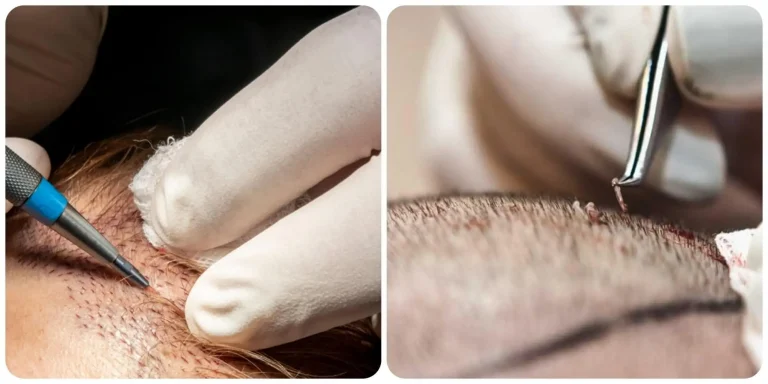
- Implantation Technique:
- DHI: In DHI, individual hair follicles are directly injected into the recipient area using a specialized implanter pen. This eliminates the need to create incisions or channels beforehand.
- Traditional Methods (FUE/FUT): In FUE (Follicular Unit Extraction) and FUT (Follicular Unit Transplantation), hair follicles are extracted first and then implanted into tiny incisions made by the surgeon.
- Scarring and Healing:
- DHI: Virtually scarless procedure. Since no incisions are made, there are no visible scars.
- Traditional Methods: FUE leaves tiny dot scars, while FUT produces a linear scar at the donor site.
- Precision and Density:
- DHI Allows precise control over hair implantation’s angle, depth, and direction. This ensures natural-looking results and optimal density.
- Traditional Methods: This may result in less precise placement and lower density due to limitations in implantation techniques.
- Downtime and Recovery:
- DHI: Minimal downtime. Patients can resume everyday actions within a day or two.
- Traditional Methods: Longer recovery period due to incisions and potential discomfort.
Advantages of DHI Hair Transplant
Overall, DHI Hair Transplant offers patients a more efficient, less invasive, and aesthetically superior solution to hair restoration compared to traditional methods.
Initial Consultation and Evaluation
The journey to DHI Hair Transplant starts with an initial consultation with a capable hair transplant specialist. During this consultation, the specialist will assess your hair loss pattern, examine your scalp, and discuss your medical history to determine your candidacy for the procedure.
They will also take this opportunity to explain the DHI technique, its benefits, and what to expect during and after the procedure.
Choosing a surgeon who is knowledgeable and trained, especially in the DHI operation.
The ideal candidate for DHI (Direct Hair Implantation):
- Alopecia Androgenica (Hair Loss with a Male or Female Pattern):
- DHI is particularly useful for individuals undergoing androgenic alopecia, which is the most typical cause of hair loss.
- Both men and women with thinning hair due to genetic factors can benefit from DHI.
- Age Requirement (Usually Over 25):
- While there’s no strict age limit, DHI is typically suggested for individuals over the age of 25.
- At this stage, the pattern of hair loss is more predictable, allowing for better planning and results.
- Hair Diameter and Donor Hair Density:
- Hair diameter (thickness) matters. Thicker hair shafts tend to yield better results with DHI.
- Adequate donor hair density is crucial. DHI relies on healthy hair follicles from the donor area (usually the back of the head). The more available donor hair, the better the outcome.
Remember, a consultation with a qualified hair restoration specialist is essential to determine whether DHI is the right choice for you.
The DHI Hair Transplant Procedure
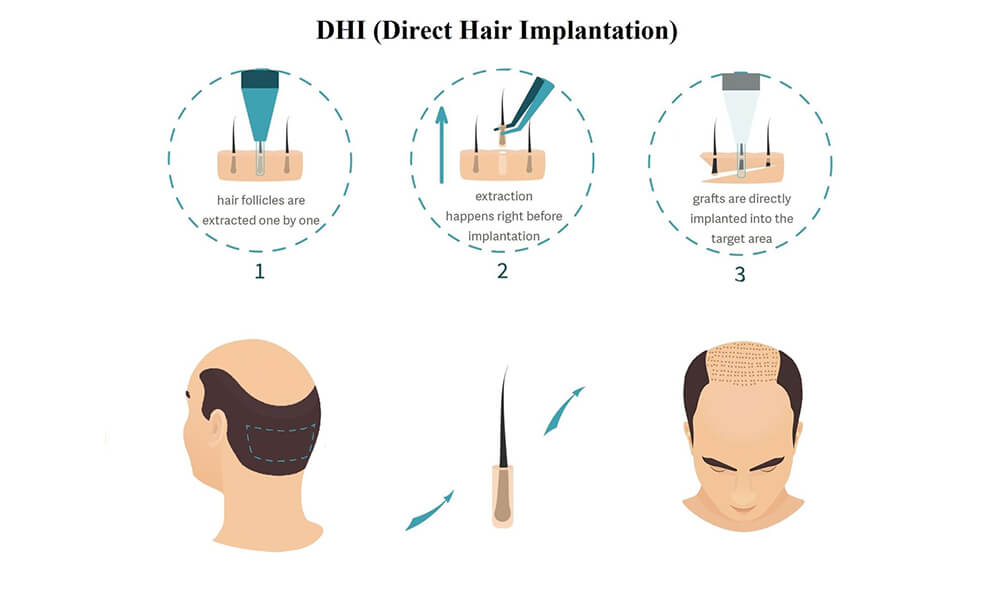
The process begins with the patient comfortably placed and the donor and recipient areas of the scalp are marked.
Using a specialized tool called a Choi pen, individual hair follicles are extracted from the donor area. Unlike traditional methods, DHI does not require the creation of recipient sites beforehand.
Once the grafts are extracted, they are directly injected into the recipient area using the same Choi pen. This allows accurate control over hair growth’s angle, depth, and direction, resulting in a natural-looking outcome.
The grafts are strategically placed in a dense-packed manner to ensure optimal coverage and a pleasing aesthetic result.
Patients receive post-operative care instructions to promote healing and optimize results after the procedure.
Provide a list of important questions to ask your doctor during a DHI consultation to ensure that you have clear expectations and can address any concerns.
Managing Expectations: What to Expect During and After DHI Hair Transplant
Understanding what to expect is essential when considering a DHI (Direct Hair Implantation) procedure. Let’s break it down:
- During the Procedure:
- Numbing of the Scalp: Before the surgery begins, your specialist will administer local anesthesia to numb the scalp. You’ll be awake but won’t feel any pain during the process.
- Extraction and Implantation: Using Choi pens, the surgeon will extract healthy hair follicles from the donor area (usually the back of the head) and implant them directly into the balding or thinning areas. The precision of DHI ensures natural-looking results.
- After the Procedure:
- Swelling and Redness: It’s normal to experience swelling and redness in the treated area. This is part of the healing process.
- Mild Discomfort: You may feel mild discomfort, which can be managed with pain medication as your specialist prescribes.
- Post-Procedure Care: Your specialist will provide detailed instructions on how to care for your scalp. Follow these diligently to promote healing and optimize results.
- Realistic Expectations:
- Understand that DHI results take time. Hair growth occurs gradually over 12 to 18 months.
- Be patient and stay committed to the process.
Proper preparation, realistic expectations, and guidance from your specialist will lead you to a fuller, more confident head of hair.
Cost for DHI hair transplants
The cost per graft for DHI (Direct Hair Implantation) hair transplants varies depending on the location. Below is a table summarizing the average costs in INR and USD:
| Location | Cost per Graft (INR) | Cost per Graft (USD) |
|---|---|---|
| India | INR 70 – INR 120 | $1.34 – $1.50 |
| USA | INR 450 – INR 750 | $6.00 |
| UK | INR 225 – INR 300 | $3.00 – $4.00 |
| Europe | INR 225 – INR 300 | $3.25 |
| Turkey | INR 105 – INR 150 | $1.50 |
These prices are averages and can vary based on clinic reputation, surgeon expertise, and individual patient needs.
Post-Procedure Care and Maintenance
Immediate Care Instructions
Long-Term Maintenance Tips for Optimal Results
Discuss probable scarring after DHI surgery and how to minimize it.
Managing Potential Side Effects and Complications
By following these post-procedure care instructions and long-term maintenance tips, you can ensure optimal results from your DHI Hair Transplant and enjoy natural-looking, healthy hair for years.
Understanding Limitations and Realistic Expectations
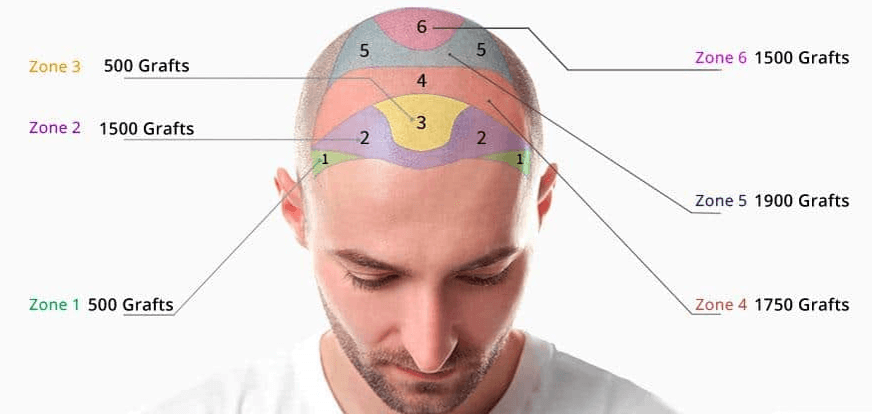
The ideal candidate for DHI Hair Transplantation is someone with sufficient donor hair, good overall health, realistic expectations, and stable hair loss patterns. By understanding the limitations and realistic expectations associated with the procedure, candidates can make informed decisions about pursuing DHI Hair Transplantation to solve their hair loss concerns.
Conclusion
Throughout this article, we’ve delved into the intricacies of DHI Hair Transplantation, from its innovative technique to its suitability for candidates with androgenic alopecia. We’ve highlighted the importance of understanding the procedure, assessing eligibility criteria, and managing expectations for optimal results.
For those on the fence about DHI Hair Transplantation, take heart. The journey to reclaiming your confidence and restoring your hair begins with a single step. With advances in technology and the expertise of experienced professionals, achieving natural-looking results is more attainable than ever. Don’t let hair loss hold you back. Embrace the possibility of a fuller head of hair and a renewed sense of self-assurance.
FAQs for Direct Hair Implantation (DHI)
Can one use DHI in conjunction with other hair restoration procedures?
For enhanced results, DHI can be combined with other treatments, such as PRP (platelet-rich plasma) therapy or medications.
How does DHI differ from other hair transplant methods?
DHI is a more accurate and efficient treatment than older techniques such as FUT (Follicular Unit Transplantation) or FUE (Follicular Unit Extraction) because it implants grafts directly without first creating recipient sites.
Is DHI suitable for both men and women?
DHI Hair Transplantation is suited for both men and women who are encountering hair loss due to various factors, including androgenic alopecia (male or female pattern hair loss).
How long does a DHI procedure take?
The area of hair loss and the required quantity of grafts determine the length of a DHI surgery. On average, it can take several hours to finish.
Is it painful to transplant DHI hair?
Patients usually feel minimal discomfort since local anaesthesia is used during DHI Hair Transplantation. Over-the-counter painkillers can typically treat any pain that may arise following the treatment.
What is the recovery process like after DHI Hair Transplantation?
Patients can usually continue their normal activities for a few days following DHI hair transplantation. Nonetheless, sticking to the surgeon’s post-operative care instructions is crucial to guarantee appropriate healing and maximize outcomes.
Are the results of DHI permanent?
Yes, the results of DHI Hair Transplantation are permanent. Once the transplanted hair follicles establish a blood supply and begin growing hair, they will restart growing naturally for the rest of the patient’s life.
Does insurance cover DHI Hair Transplantation?
DHI Hair Transplantation is typically not reimbursed by insurance since it is considered a cosmetic operation. Some clinics, however, provide financing options to help patients afford the operation.
